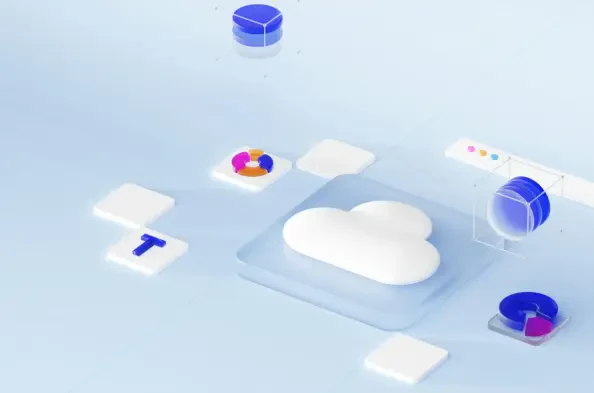The modern digital landscape is constantly evolving, driven by the rapid advancement of cloud computing technologies and services. Among these, Google Cloud Platform (GCP) remains a cornerstone for many businesses, offering a plethora of services to manage and automate data workflows. However, like any extensive system, security vulnerabilities can emerge within its framework. One such notable vulnerability, termed “ConfusedComposer,” recently came to light, raising alarms about privilege escalation risks within GCP. This critical flaw was rooted in Google Cloud Composer, a managed service for orchestrating data pipelines, and required immediate attention to safeguard sensitive project resources.
Understanding the Vulnerability
“ConfusedComposer” stems from the interaction between Cloud Composer and Google Cloud Build, GCP’s continuous integration and delivery service. The vulnerability was particularly linked to the installation of custom PyPI packages in the Cloud Composer environment, a function that automatically triggered a build process. This build process, initiated by the Cloud Composer service account, provisioned a Cloud Build instance within the user’s project, inadvertently creating a significant security loophole.
Researchers discovered that an attacker with “composer.environments.update” permissions could capitalize on this process by injecting a malicious PyPI package. This malicious package, through Python’s package installer Pip, could run arbitrary code pre- and post-installation, thus gaining access to the Cloud Build environment. By exploiting Cloud Build’s metadata API, the attacker could extract the service account token, which, due to the broad permissions of the default Cloud Build service account, allowed elevated access across the victim’s entire GCP project.
The severity of this vulnerability underscored the complexities inherent in cloud security. Cloud services, due to their interconnected nature, can be particularly susceptible to misconfigurations, making it imperative for administrators to remain vigilant about permissions and service interactions.
Google’s Response and Remediation Measures
Upon identification of the “ConfusedComposer” vulnerability, Google promptly addressed the issue by reconfiguring how Cloud Composer handles PyPI module installations. The revised process no longer employs the Cloud Build service account but instead utilizes the Composer environment service account to perform installations. This change was immediately applied to new Composer instances and was gradually rolled out to all existing instances by now. This strategic fix ensured that the permissions for service accounts were more tightly controlled, thereby mitigating the risk of privilege escalation.
In addition to these technical fixes, Google has made significant enhancements to its documentation related to Cloud Composer. These updates cover areas such as Access Control, Installing Python Dependencies, and Accessing the Airflow CLI. By providing clearer guidance and more detailed information, Google aims to empower users to adopt better security practices and make informed decisions about managing project permissions.
The exposure and subsequent patching of “ConfusedComposer” highlight GCP’s commitment to security but also emphasize a broader lesson: cloud configuration and permissions must be meticulously managed to protect against potential vulnerabilities. Regular audits, along with adherence to best practices in both documentation and implementation, are pivotal in safeguarding cloud environments.
Broader Implications for Cloud Security
The discovery of “ConfusedComposer” falls within the category of “Jenga” attacks, which focus on exploiting service permissions and interoperability within cloud ecosystems. This concept mirrors a previous GCP vulnerability known as “ConfusedFunction,” wherein similar misconfigurations were targeted to elevate privileges. These attacks shed light on a crucial aspect of cloud security: the potential risks that arise from complex interactions between different services.
In scenarios where automated processes involve multiple service interactions, it is crucial to have stringent controls and consistent monitoring. Service accounts, often endowed with broad permissions to facilitate various tasks, must be carefully managed to prevent unauthorized access. Security teams need to implement least-privilege policies, ensuring that service accounts have only the necessary permissions to perform their intended functions.
Moreover, fostering a culture of continuous monitoring and rapid response is essential in maintaining a secure cloud environment. Regular security assessments, vulnerability scans, and prompt patching of identified issues are integral components of an effective cloud security strategy. By understanding the dynamics of cloud services and proactively managing potential risks, organizations can better protect their valuable data and infrastructure from sophisticated attacks.
Key Takeaways and Future Considerations
The modern digital landscape is ever-changing, driven by the swift progress in cloud computing technologies and services. Among these, Google Cloud Platform (GCP) stands as a crucial element for numerous enterprises, providing a wide array of services designed to manage and automate data workflows efficiently. Yet, like any complex system, it is not immune to security vulnerabilities. A significant vulnerability, named “ConfusedComposer,” recently surfaced, raising concerns over potential privilege escalation within GCP. This critical flaw was found in Google Cloud Composer, a managed service that orchestrates data pipelines. The vulnerability required urgent action to protect sensitive project resources from unauthorized access or manipulation. This incident underscores the importance of constant vigilance and prompt response in maintaining the security and integrity of cloud-based systems. As cloud services continue to evolve, so must the measures to secure them, ensuring businesses can leverage these technologies safely and effectively.






